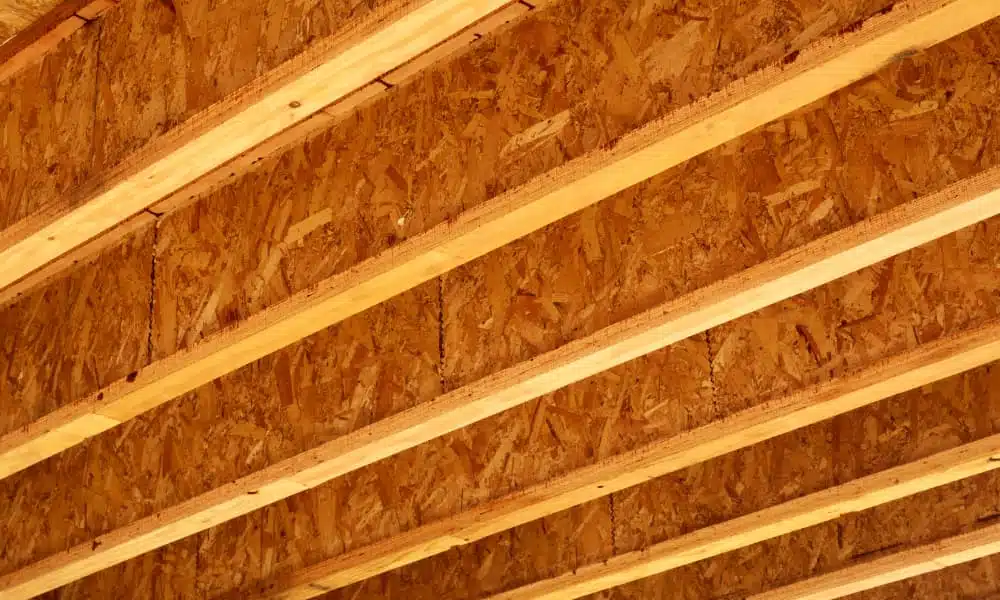There is a lot riding on a healthy floor joist – literally. Joists are horizontal wooden beams that provide a layer of support between foundations and floors or between basements, crawlspaces, and floors, depending on your home’s structure. Think of them as the backbone of a floor, designed to keep it strong and firm.
This strength isn’t guaranteed over the long term because joists are like backbones in another way: They can become worn out, damaged, or cracked. These are the first sign of impending issues that could threaten the structure of your floor and wider household.
Damaged floor joists are something you should take seriously because neglecting them can lead to further damage. This guide will explain a joist’s job, what homeowners can do to make it easier, how they get damaged, and who to call for foundation maintenance and repair services.
Understanding the Pressures Joists Face
Floor joists have a demanding job. They don’t just handle the daily weight of a home’s occupants, furniture, and appliances, but also help to support ceilings and walls while facing attack by insects and unwanted moisture. Sufficiently weakened joists can be responsible for difficulty opening doors, cracked walls or ceilings, and bouncy or sagging floors.
The worst-case scenario is when cracks or damage signal wider foundation damage. Compromised joists can typically be traced back to one of several issues, and sometimes a combination. The main thing is knowing how to identify cracked or damaged floor joists and how to take action.
Insect Infestation
Termites and woodworm share an appetite for wood, thus both species are common contributors to joist damage. Woodworm gouge holes in the joists while termites burrow into them in search of cellulose, leaving honeycomb-like tunnels in their wake. Both woodworm and termite damage (which can run the full length of a joist) weaken lode-bearing power significantly.
Improper Notching, Boring, or Drilling
Safe ingress into a floor joist is dictated by multiple rules under the International Residential Code (IRC R502.8 and R802.7). Depth cannot exceed one-sixth of the joist’s mass, nor can the middle third of a joist be bored, drilled, or notched, because that’s where bending forces are greatest. Call a foundation maintenance services expert if you can see joist holes of worrying placement or depth.
Damp Crawl Spaces
Crawl space moisture can cause cracked or damaged floor joists if the issue goes unchecked. This promotes fungal growth and water damage and may cause visible blistering on the wood. Blisters on floor joists may also be a further indicator of termite activity.
General Water Damage
Household leaks can be large and noticeable, or smaller ones can drip away unmanaged. Both can seep into floor joists and eat away at the wood until structural integrity is compromised. Water-damaged wood will crack from bulging or buckling and can also darken in color.
It is likely that one or more of these issues will affect floor joists sooner or later. Wood doesn’t last forever, but homeowners can give joists their longest possible life by staying vigilant and being proactive.
3 Ways to Help Your Floor Joists
Knowing the burden that floor joists bear is key to helping them stay strong and functional. Homeowners can use this information to make the right calls on whether to get cracked or damaged floor joists fixed, depending on the problem. Here are a few preventive measures that can help keep your joists healthy:

1. Manage Your Moisture Levels
Homeowners have a few options to keep crawl space moisture under control. The first is crawl space encapsulation, which repairs any current issues and makes a home dryer and more energy efficient. The second is basement waterproofing, which can be tailored to for property-specific solutions. Homeowners should also keep an eye out for leaks and have a plumber assess them.
2. Call Insect Infestation Specialists
Safely evicting insects from your home takes calling in a specialist team. Termites alone come in several varieties such as dry wood, damp wood, and subterranean. Pros know the differences and get the job done while prioritizing human health and safety in the process.
3. Let the Experts Joust With Joists
DIY can be dangerous when dealing with lode-bearing structures. Foundation maintenance and repair experts can assess joists and safely lift and level sagging floors by adding extra joists for strength (or replacing joists that are beyond saving). Their experience allows the property, its possessions, and occupants to stay safe while work is carried out.
It’s impossible to be too careful when it comes to cracked or damaged floor joists. Those tiny impairments can become major problems by harboring harmful bacteria or acting as gateways for other structural threats.
Common Pitfalls of Mishandling Faulty Floor Joists
Ignoring or mishandling cracked or damaged floor joists only worsens a bad situation. Negligence and good intentions expose floors to further termite dangers and other costly outcomes. Don’t let the following flaws become literal pitfalls in your home:
- Termites leave droppings called frass around damaged floor joists. The problem is that frass looks exactly like sawdust. Safe removal requires foundation maintenance professionals who can tell the difference and avoid skin irritation or other allergic reactions.
- Termites and unchecked crawl space moisture attract mold by accelerating the decomposition of wood. Mold does double damage by further weakening joists and exposing occupants to serious health risks.
- Dosing insect-riddled joists with chemical repellents can backfire in two ways. This kind of DIY solution can fill your home with hazardous fumes and send termites off to nest elsewhere in your property.
- Raising and leveling a floor can take days and involve heavy weights and multiple jacks. Anyone other than an expert team runs the risk of personal injury, property damage, and upsetting the delicate balance of their home’s foundation.
- Managing water damage involves more than a few fans and plugging a leak. It takes a professional eye to truly solve an issue by fixing the cosmetic signs and addressing the underlying causes.
Floor joists are difficult to see, but their cries for help are often found in plain sight. Any sign of a cracked or damaged floor joist is enough reason to immediately call the professionals for peace of mind on how to proceed.
Contact the LUX Experts With Your Questions
There’s a lot to be concerned about when it comes to the health of your floor joists, but there’s also no need to panic. LUX Foundation Solutions is your go-to if you see (or suspect) a cracked or damaged floor joist or are in need of professional foundation repair or foundation maintenance services. Our team will answer any questions and walk you through any necessary solutions.
Contact LUX Foundation Solutions today to speak to an expert.
